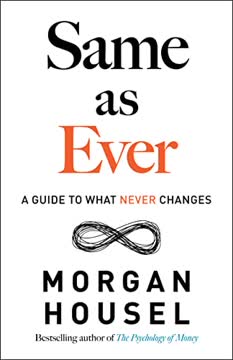मुख्य निष्कर्ष
1. नैतिक निर्णय लेने की कला सीखी और सुधारी जा सकती है
"हमें स्पष्ट नैतिक सोच के लिए नैतिक भेदों में महारत हासिल करनी होगी। हमें पहले से नैतिक सिद्धांतों के प्रति प्रतिबद्ध होना चाहिए। और हमें समझदारी से निर्णय लेने के लिए अनुशासित कौशल का अभ्यास करना होगा।"
नैतिक क्षमता अभ्यास से आती है। किसी भी कौशल की तरह, अच्छे नैतिक निर्णय लेने की कला भी सचेत प्रयास और बार-बार अभ्यास से निखरती है। लेखक बताते हैं कि नैतिक निर्णय लेने में तीन मुख्य तत्व शामिल हैं:
- महत्वपूर्ण नैतिक भेदों और अवधारणाओं को समझना
- व्यक्तिगत नैतिक सिद्धांतों को पहले से विकसित करना और उनसे प्रतिबद्ध होना
- नैतिक दुविधाओं का सामना करते समय अनुशासित प्रक्रिया का पालन करना
इन क्षमताओं को निखारकर हम सहज प्रतिक्रियाओं से हटकर सोच-समझकर जवाब दे सकते हैं। लक्ष्य यह है कि नैतिक व्यवहार आदत बन जाए, जिससे हम कठिन परिस्थितियों में बुद्धिमत्ता और ईमानदारी के साथ निर्णय ले सकें।
2. रोज़मर्रा के झूठ, धोखा, चोरी और नुकसान पहुँचाने के प्रलोभनों को पहचानें
"सबसे बुद्धिमान और श्रेष्ठ लोग भी नैतिक समझौते में फंस जाते हैं।"
नैतिक फंदे हर जगह मौजूद हैं। हम अक्सर छोटे-छोटे उल्लंघनों को उचित ठहराने के लिए बहाने बनाते हैं, लेकिन ये धीरे-धीरे हमारी ईमानदारी को कमजोर कर देते हैं। आम प्रलोभन हैं:
- झूठ बोलना: उपलब्धियों को बढ़ा-चढ़ाकर बताना, बहाने बनाना, या गलतियों को छुपाना
- धोखा देना: जरूरी जानकारी छुपाना या गलत छवि बनाना
- चोरी करना: कार्यालय की सामग्री लेना, कॉपीराइटेड सामग्री डाउनलोड करना, या खर्चों में बढ़ोतरी करना
- नुकसान पहुँचाना: गपशप करना, सुरक्षा नियमों की अनदेखी करना, या दूसरों को जोखिम में डालना
इन रोज़मर्रा के प्रलोभनों को पहचानना नैतिक गलतियों से बचने का पहला कदम है। जागरूकता बढ़ाकर हम ठहराव लेकर अपने मूल्यों के अनुरूप सोच-समझकर निर्णय ले सकते हैं।
3. नैतिक सोच को स्पष्ट करने के लिए महत्वपूर्ण भेद करें
"भेद समझ का ताला खोलने की चाबी हैं। ये हमें दुनिया के मुद्दों को नए और उपयोगी हिस्सों में बाँटने की शक्ति देते हैं।"
स्पष्ट सोच के लिए सटीक भेद आवश्यक हैं। लेखक नैतिक तर्क को बेहतर बनाने के लिए कुछ महत्वपूर्ण भेद बताते हैं:
- विवेकपूर्ण, कानूनी और नैतिक: स्वार्थ, कानूनी अनुपालन और नैतिक सही को अलग करना
- सकारात्मक और नकारात्मक नैतिकता: कर्तव्यों और निषेधों के बीच फर्क करना
- क्रिया-आधारित और परिणाम-आधारित नैतिकता: कार्य की अंतर्निहित सही या गलत पर ध्यान देना बनाम परिणामों पर
- तर्क और तर्कसंगतता: ईमानदार विश्लेषण बनाम स्वार्थी औचित्य
इन भेदों को लागू करके हम जटिल परिस्थितियों में मुख्य नैतिक मुद्दों की पहचान बेहतर कर सकते हैं। इससे हम कानूनी अनुपालन को नैतिक व्यवहार से भ्रमित करने या परिणामों के आधार पर अनैतिक कार्यों को सही ठहराने जैसी गलतियों से बचते हैं।
4. धर्म, पालन-पोषण और कार्य से नैतिक मार्गदर्शन लें
"अपने अतीत में नैतिक मार्गदर्शन खोजें।"
नैतिक बुद्धिमत्ता विभिन्न स्रोतों से आती है। लेखक पाठकों को तीन मुख्य क्षेत्रों पर विचार करने के लिए प्रोत्साहित करते हैं:
- धार्मिक परंपराएँ: अपने धार्मिक विश्वासों के मूल शिक्षाओं और सिद्धांतों की समीक्षा करें
- पालन-पोषण और संस्कृति: परिवार, शिक्षा और समाज द्वारा सिखाए गए मूल्यों पर ध्यान दें
- पेशेवर मानक: अपने उद्योग या क्षेत्र के नैतिक कोड और नियमों को देखें
इन स्रोतों की सचेत खोज से हम उन नैतिक सिद्धांतों की पहचान कर सकते हैं जो हमारे लिए सबसे अधिक प्रासंगिक हैं। यह चिंतन हमें अपने व्यक्तिगत नैतिक आधार को स्पष्ट करने और विभिन्न मार्गदर्शनों के बीच संभावित टकराव को समझने में मदद करता है।
5. निर्णयों के लिए व्यक्तिगत नैतिक संहिता विकसित करें
"पहले से सोची-समझी संहिता हमारे वकील मित्र की मदद कर सकती थी।"
सक्रिय नैतिक प्रतिबद्धता आवश्यक है। लेखक एक व्यक्तिगत नैतिक संहिता बनाने की सलाह देते हैं जो निर्णय लेने के लिए मार्गदर्शक बने। इस संहिता को विकसित करने के मुख्य चरण हैं:
- मानक तैयार करें: झूठ बोलने, चोरी करने और नुकसान पहुँचाने जैसे मूल सिद्धांतों से शुरुआत करें
- संहिता का परीक्षण करें: तर्कसंगतता जांचें और वास्तविक जीवन में लागू करने की क्षमता देखें
- सुधार और स्पष्टता लाएं: सूक्ष्मताओं को संबोधित करें, स्पष्ट सीमाएं तय करें और टकराव सुलझाएं
एक अच्छी तरह से तैयार की गई नैतिक संहिता हमें तात्कालिक दबाव में स्पष्टता देती है, जिससे हम अपने मूल्यों के अनुरूप निर्णायक और सुसंगत कार्य कर सकें। यह हमें नैतिक रूप से जटिल परिस्थितियों से पहले ही बचने में भी मदद करती है।
6. नैतिक विकल्प चुनने के लिए व्यवस्थित प्रक्रिया अपनाएं
"सर्वोत्तम निर्णय लेने के लिए हमें तीन-चरणीय प्रक्रिया का पालन करना चाहिए।"
नैतिक निर्णय लेने में संरचना लाभकारी होती है। लेखक नैतिक दुविधाओं के लिए एक व्यवस्थित दृष्टिकोण प्रस्तुत करते हैं:
-
नैतिक मुद्दे को स्पष्ट करें:
- मूल्य-तटस्थ भाषा का उपयोग करें
- विवेकपूर्ण, कानूनी और नैतिक चिंताओं को अलग करें
- संबंधों के संदर्भ में मुद्दे को परिभाषित करें
-
विकल्प बनाएं:
- न्यूनतम मानकों का पालन करने वाले विकल्पों पर विचार करें
- ऐसे विकल्प खोजें जो नैतिक आदर्शों के अनुरूप हों
- कल्पना करें कि आप अपने प्रियजनों के प्रति कैसे व्यवहार करेंगे
-
विकल्पों का मूल्यांकन करें:
- अपने व्यक्तिगत नैतिक संहिता के अनुसार जांचें
- पारस्परिकता और सार्वभौमिकता के परीक्षण लागू करें
- यदि आवश्यक हो, तो संभावित परिणामों का विश्लेषण करें
यह प्रक्रिया हमें सहज प्रतिक्रियाओं से ऊपर उठकर सोच-समझकर, तर्कसंगत और न्यायसंगत नैतिक निर्णय लेने में मदद करती है। यह रचनात्मक समाधान खोजने को प्रोत्साहित करती है और कार्य करने से पहले विभिन्न दृष्टिकोणों पर विचार सुनिश्चित करती है।
7. नैतिक चुनौतियों को विकास के अवसरों में बदलें
"प्रलोभन हमें सही और गलत के बीच संतुलन पर खड़ा करते हैं। हम ईमानदारी की राह पर चल सकते हैं। हम स्वार्थ और समझौते की ओर गिर सकते हैं। हम, किसान की तरह, नैतिक रूप से संदिग्ध परिस्थितियों से दूर भी जा सकते हैं। या हम आगे बढ़कर अधिक संतोषजनक जीवन के लिए परिवर्तनकारी समाधान बना सकते हैं।"
नैतिक दुविधाएं सकारात्मक बदलाव के उत्प्रेरक हो सकती हैं। लेखक सुझाव देते हैं कि नैतिक चुनौतियों को निम्न अवसरों के रूप में देखें:
- पूरी सच्चाई बताकर संबंधों को गहरा बनाना
- पारदर्शिता और जवाबदेही से विश्वास बनाना
- "विकास विकल्प" चुनकर चरित्र को मजबूत करना
इस मानसिकता को अपनाकर हम नैतिक निर्णय लेने को केवल गलत से बचने का माध्यम नहीं, बल्कि अपने और अपने आस-पास के लोगों के जीवन को बेहतर बनाने का जरिया बना सकते हैं। यह परिवर्तनकारी दृष्टिकोण संभावित जोखिमों को व्यक्तिगत और पेशेवर विकास के लिए सीढ़ी में बदल देता है।
अंतिम अपडेट:
FAQ
What's Ethics for the Real World about?
- Ethical Decision Making: The book focuses on mastering ethical distinctions to enhance clear thinking and disciplined decision-making.
- Personal Ethical Code: It guides readers in creating a personal code to navigate ethical dilemmas in both work and life.
- Real-World Applications: Authors Ronald A. Howard and Clinton D. Korver provide practical tools for making ethical decisions in everyday situations.
Why should I read Ethics for the Real World?
- Skill Development: It offers a systematic approach to developing ethical reasoning skills, enhancing personal integrity and relationships.
- Practical Framework: The book provides a structured framework for addressing ethical challenges, making complex situations easier to navigate.
- Real-Life Examples: Relatable scenarios and historical examples illustrate the consequences of ethical compromises, making lessons impactful.
What are the key takeaways of Ethics for the Real World?
- Awareness of Ethical Compromise: Readers learn to recognize common ethical temptations and their unintended consequences.
- Importance of Distinctions: The book stresses distinguishing between prudential, legal, and ethical dimensions of actions.
- Creating a Personal Code: It guides readers through drafting, testing, and refining their own ethical codes to guide behavior.
What are the best quotes from Ethics for the Real World and what do they mean?
- "Man has a natural aptitude for virtue...": Highlights the need for conscious effort and practice in developing ethical behavior.
- "The chains of habit are too weak...": Emphasizes how small ethical compromises can lead to larger issues if not addressed early.
- "The evil that is in the world...": Underscores the importance of understanding ethical principles to avoid unintentional harm.
How does Ethics for the Real World define ethical compromise?
- Common Ethical Temptations: Identifies deception, stealing, and harming as main categories leading to compromises.
- Slippery Slope: Explains how small compromises can create a pattern of unethical behavior.
- Impact on Relationships: Ethical compromises affect personal integrity and create barriers in relationships.
What is the process for creating a personal ethical code in Ethics for the Real World?
- Drafting Standards: Identify key ethical issues and outline principles regarding deception, stealing, and harming.
- Testing Standards: Evaluate standards against ethical role models and apply tests for reciprocity and universality.
- Refining the Code: Clarify degrees of separation, draw sharper lines for positive ethics, and consider a hierarchy of principles.
What are the distinctions between prudential, legal, and ethical dimensions of actions in Ethics for the Real World?
- Prudential Dimension: Relates to self-interest and practical considerations like financial gain or personal loyalty.
- Legal Dimension: Involves the law and whether an action is lawful, which may not always align with ethical considerations.
- Ethical Dimension: Focuses on what is right or wrong according to one’s beliefs, requiring deeper reflection beyond legality or practicality.
What specific methods does Ethics for the Real World recommend for ethical decision-making?
- Three-Step Process: Clarify the ethical issue, create appealing alternatives, and evaluate those alternatives.
- Testing Alternatives: Use principles of reciprocity and universalizability to ensure decisions are fair and just.
- Characterizing Consequences: For consequentialists, assess uncertainties and evaluate trade-offs for each alternative.
How does Ethics for the Real World address the concept of reciprocity?
- Reciprocity as a Test: Evaluates ethical alternatives by considering how you would want to be treated in similar situations.
- Raising the Bar: Encourages considering how loved ones should be treated, leading to more compassionate decisions.
- Transforming Relationships: Applying reciprocity can turn ethical challenges into opportunities for strengthening relationships.
What role do ethical role models play in Ethics for the Real World?
- Guidance for Behavior: Serve as benchmarks for acting in challenging situations, providing examples of integrity.
- Inspiration for Personal Codes: Help shape personal ethical codes by resonating with readers' principles.
- Testing Alternatives: Considering what a role model would do can clarify the best course of action.
How does Ethics for the Real World suggest handling secrets?
- Criteria for Accepting Secrets: Be cautious and clarify the ability to keep secrets in advance to set clear expectations.
- Time Limits on Secrets: Suggests putting time limits on secrets to avoid indefinite burdens.
- Communicating Exceptions: Emphasizes notifying others about exceptions to confidentiality for safety or legal reasons.
What role does personal growth play in Ethics for the Real World?
- Ethical Sensitivity: Personal growth is tied to developing sensitivity to recognize and navigate ethical dilemmas.
- Transforming Temptations: Encourages viewing ethical challenges as opportunities for growth, not obstacles.
- Continuous Reflection: Advocates for ongoing reflection and refinement of ethical codes for personal growth and integrity.
समीक्षाएं
एथिक्स फॉर द रियल वर्ल्ड को मिली-जुली प्रतिक्रियाएँ मिली हैं। कुछ पाठक इसे व्यावहारिक और जीवन बदलने वाला मानते हैं, इसकी वास्तविक जीवन की उदाहरणों और व्यक्तिगत नैतिक कोड विकसित करने के क्रमबद्ध तरीके की प्रशंसा करते हैं। वहीं, कुछ आलोचक इसे गहराई की कमी वाला बताते हैं और एक समग्र नैतिक प्रणाली प्रदान करने में असफल मानते हैं। इस पुस्तक की पठनीयता और सरल, सहज शैली की भी सराहना हुई है, जिससे नैतिकता को व्यापक पाठकों के लिए सुलभ बनाया गया है। हालांकि, कुछ समीक्षक इसे जटिल नैतिक मुद्दों को अत्यंत सरल बनाने वाला और नैतिक समझौतों को पर्याप्त रूप से संबोधित न करने वाला भी मानते हैं। कुल मिलाकर, यह नैतिकता की शुरुआत करने वालों के लिए एक अच्छी परिचयात्मक पुस्तक मानी जाती है, लेकिन जो लोग गहन दार्शनिक चर्चाएँ चाहते हैं, वे इससे निराश हो सकते हैं।
Similar Books














